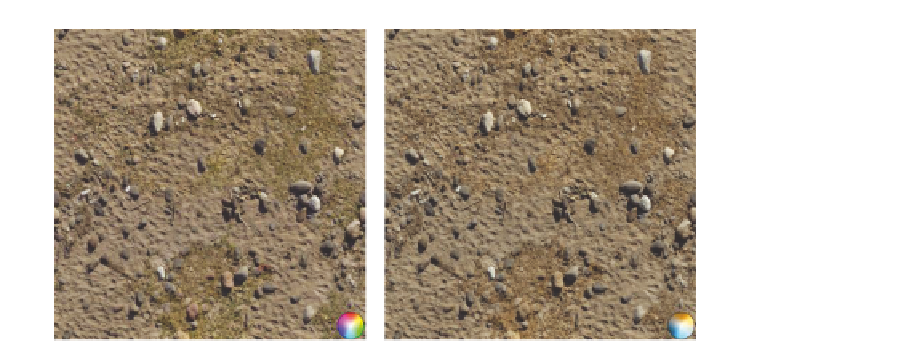Graphics Reference
In-Depth Information
Figure 2.6.
Sand, dead grass, and rocks texture example. Original image (left) and the
decoded result after 2-channel compression (right).
teal-orange plane for the second image. While the stone and grass texture mostly
remains unaffected, the sand, grass, and stones texture required finding a compro-
mise resulting in some grass discoloration and smaller off-color elements changing
color completely.
2.5 Conclusion
The encoding and decoding methods presented in this chapter allow storing tex-
tures with low color variety using only two texture channels. Apart from the
obvious savings, this opens additional possibilities. For example, considering
that most texture sampler implementations support 4-channel textures, the two
remaining channels can be used for other purposes, e.g., storing
x
and
y
compo-
nents of the material normal map, resulting in a compact material representation
with just a single texture image. Even if not using this feature, the fact that
the proposed 2-channel color encoding relies on a luminance-hue decomposition
allows custom texture compression algorithms. We can assign higher priority
to luminance information during texture compression, accumulating most of the
compression error in hue, to changes to which the human eye is less sensitive,
increasing the overall compressed image quality. We should also note that the
proposed encoding scheme can be used directly with existing mip-mapping solu-
tions, because averaging luminance-values and hue-blend factors is a good approx-
imation of averaging color values. We should only be aware that the luminance
values are stored with a gamma of 2 and may require a custom mip-map chain
generation if we require fully linear color processing in the whole lighting pipeline.









